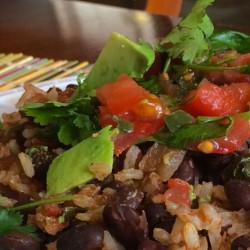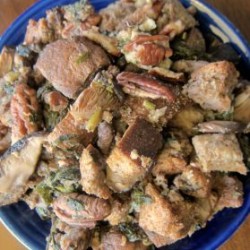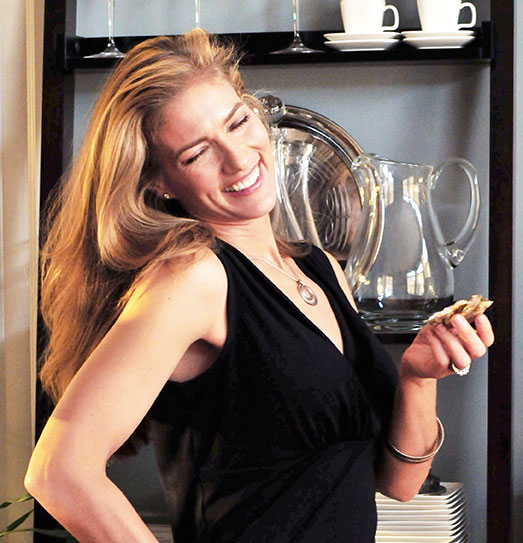Tuesday, November 27, 2012
Are Whole Grains Part of Your Diet? Why Not?

Source: wholegrainscouncil.org
What was on your Thanksgiving table? Did you go traditional with all your favorite fixings, or was your table gluten-free? Or did you omit grains entirely, of Paleo diet ilk, much to the dismay of your stuffing-loving guests? Or maybe you’re an adventurous sort and tried something completely new, like a nice Thanksgiving eel? (It’s a thing, apparently.) However you celebrated, the day marks the beginning of the holiday season and all it entails: we march onward from Black Friday to New Year’s Day with joys and laughter, stresses and challenges, as we manage busy work schedules and social calendars.
For many, these final days of the year are a time of weight gain. I hate talking about it, too, but doesn’t make it any less true. Now and again over the coming months I’ll write about this subject specifically in my quest to keep you healthy and fit during the holidays and beyond. Yet, this week I wanted to take revisit a topic I’ve not focused on recently: whole grains. Rich in fiber and other valuable nutrients (more on whole grain nutrition here), these foods can be part of a healthy diet and keep you feeling full, an important strategy for weight management. As many people have cut grains from their diet, this also seemed like a good time to provide a few brief thoughts on gluten-free and Paleo diets before posting some recipes featuring whole grains later this week.
Going Gluten-Free: Is it Necessary?
So you cut out gluten, you say, and many of the healthy whole grains that contain it? Um, okay, but it’s probably not necessary: the number of Americans with celiac disease, an automimmune disorder, is very small: about 1%; a higher percentage has a gluten sensitivity (about 6%). Both lead to a variety of gastrointestinal and other symptoms. While it’s true that the prevalence of celiac and related gluten disorders has indeed risen in recent years and are often under-diagnosed, a large proportion of Americans in particular have jumped on the gluten-free bandwagon. Are you among them? (A nicely balanced article further discussing a recent study is here.)
Now, it’s true that there have been some changes in wheat cultivars over the years that could potentially explain the rise in allergies and intolerances. Another potential explanation is the increase in consumption of highly processed foods made from wheat, or some other reason we don’t yet understand. It is always worth assessing your diet to see if there’s something that doesn’t agree with you, especially given many people with gluten issues are unaware.
Even so, the gluten-free movement appears to be a dietary fad, and people who don’t have a problem with it should consider carefully what they’ve done to replace these grains in their diet. And, those who don’t have an actual problem with it may need a reminder that whole grains are packed with nutrition; there are also a number of gluten-free choices that add variety and texture to many dishes.
But What About the Paleo Diet?
If you’re not familiar, the Paleolithic Diet is based on the evolutionary discordance hypothesis that omits grains given they weren’t part of the diet of early humans. The rationale is that humans were hunter-gatherers for millions of years before the agriculture revolution during the Neolithic period (approximately 10-12,000 years before present), when grains were first cultivated for food. There is in fact some science in the nutritional and medical literature to support this hypothesis, which has been around more than thirty years. (You can search yourself here if you are so inclined.) There are many things about this eating plan that are sound, like limiting refined and processed foods high in sugar and salt and relying mainly on whole, plant-based foods and lean proteins to form the foundation of your diet. These are the fundamentals of many of my teachings and recipes as well, after all. However, I do also consume whole grains given my love of diverse cuisines and food cultures and adherence to the majority of nutritional science knowledge. (More on general dietary guidelines here.)
Is it Time to Take the Whole Grain (Holiday) Challenge?
Savory or sweet, there are lots of ways to incorporate whole grains into your diet in ways you might not have considered, even fancy holiday fare like wild mushroom, spinach, and pecan stuffing, pumpkin bread pudding, and dark chocolate biscotti. This week I’ll share with you a few dishes like these that I made over Thanksgiving in the hopes of encouraging you to swap out the refined stuff for a healthier choice.
And I’ll bet your family, kids, and guests won’t even be able to tell the difference.






I recently cut out wheat because I feel that it is highly processed and I find I’m less bloated when I avoid it. I do the same with dairy although Greek yogurt I keep in my diet:)
Whole wheat, like other whole grains, is minimally processed; that’s why they’re considered “whole.” In fact, dairy products such as yogurt are far more processed. Just fyi :).
It’s an interesting point you’re making. I recently switched over to preparing a very German breakfast – cold cuts, wurst, jams, cheese, and of course, Bro:tchen. I’m still combing through for good homemade breads that fit the hearty breakfast bill. But I know that this (very antique) breakfast is relying on bread to be the staying power, and I can’t imagine the meal without it, even discounting all the deliciously amazing regional varieties of German breads!
And as long as they’re a hearty whole grain, no need to do so! 🙂 Now, about some of the other parts of your breakfast, like cold cuts, well, er… I guess we’ll leave the topic of processed meats for another time. Not that you were asking. 😉 Thanks for the comment! This breakfast is similar to many I’ve enjoyed in Scandinavia.
True! My guilt over liverwurst and salami is sincere. There will have to be time enough to mindfully evaluate all the aspects of a whole foods breakfast… Sigh. But reassuring re: the bread.